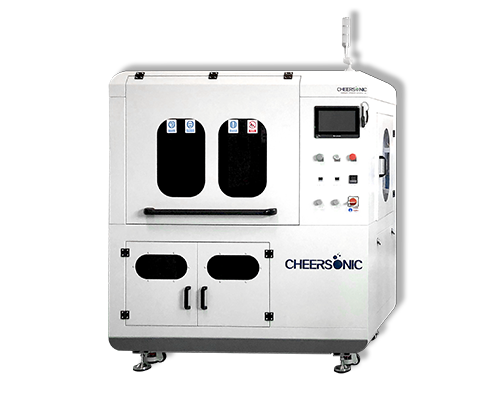SiC Power Semiconductor
In recent decades, power semiconductor devices based on the newly developed third-generation wide bandgap power semiconductor material silicon carbide (SiC) have attracted much attention due to their excellent performance. Compared with the first generation of semiconductor materials silicon (Si), germanium (Ge) and the second generation of semiconductor materials gallium arsenide (GaAs), gallium phosphide (GaP), GaAsAl, GaAsP and other compounds, SiC has wider band gap, stronger high-temperature resistance, higher switching frequency, lower loss and better stability, and is widely used to replace silicon-based materials or applications where silicon-based materials are difficult to adapt.
(1) Wider band gap width: The band gap width of SiC is more than 3 times higher than that of Si, which makes the breakdown field strength it can withstand higher (the critical breakdown field strength is more than 10 times of that of Si-based), so the device can withstand higher peak voltage and output higher power. At the same voltage level, the drift region of SiC power semiconductor devices can be made thinner, which can make the size of the whole power module smaller and greatly improve the power density of the whole power module. In addition, the on-resistance R on is inversely proportional to the third power of the breakdown field strength. The ability to withstand the breakdown field strength is high and the on-resistance is small, which reduces the on-loss during the device switching process and improves the efficiency of the power module.
(2) Higher temperature resistance: it can be widely used in high temperature conditions with temperature over 600 ℃, while Si-based devices lose blocking effect due to exceeding their heat resistance at about 600 ℃. Silicon carbide greatly improves the high-temperature resistance of power devices.
(3) Higher thermal conductivity: The thermal conductivity of SiC devices is more than 3 times higher than that of Si. The high thermal conductivity improves the heat dissipation ability of devices and power modules, reduces the requirements for the heat dissipation system, and is conducive to improving the power density of power modules.
(4) The carrier saturation rate is higher: compared with Si, the carrier saturation rate of SiC is more than 10 times higher, and the switching frequency of SiC device is 5~10 times higher than that of Si-based IGBT, which enhances the high frequency capability of the device. SiC devices not only have small on-resistance R on, but also have low switching process loss, which improves the high-frequency performance of power modules.
(5) Higher critical displacement capability: not only is the critical displacement capability of SiC more than 2 times higher than that of Si, but also the radiation stability of SiC devices is 10~100 times higher than that of Si-based devices. SiC-based devices have higher resistance to electromagnetic shock and radiation damage. It is suitable for making high-power microwave devices with high temperature resistance and radiation resistance.
However, most of the existing packaging technologies are similar to those of Si-based devices, and there are many key problems to be solved in order to give full play to the above properties of silicon carbide.
Due to the high frequency characteristics of SiC devices, small junction capacitance, low grid charge, fast switching speed, great change rate of voltage and current in the switching process, and parasitic inductance under the maximum di/dt, it is very easy to generate voltage overshoot and oscillation, resulting in the increase of voltage stress, loss and electromagnetic interference of the device.
With regard to the rapid decline of reliability under extreme conditions such as high temperature and severe cold, it is urgent to find connecting materials and packaging processes that can adapt to different working conditions and meet the thermal characteristics requirements of different packaging forms. In view of the internal interference of modules, multi-surface heat dissipation, large-capacity series-parallel connection, manufacturing cost and difficulty, it is the future trend to appropriately reduce the number of thermal interface layers, reduce the module volume, and improve the power density and multi-function integration. The adoption of advanced heat dissipation technology, pressure sintering process, design of power semiconductor chip integration, optimization of multi-chip layout and other ways play a key role.
In response to the above problems, domestic and foreign experts and their teams have developed different packaging technologies to improve module performance, reduce stray parameters and enhance high-temperature reliability.
The above excellent characteristics of silicon carbide can be fully developed only through the reliability design of module packaging layout, the selection of packaging materials, the optimization of parameters, the high efficiency of signals and the improvement of packaging process.
Ultrasonic spraying technology is used for semiconductor photoresist coating. Compared with traditional coating processes such as spin coating and dip coating, it has the advantages of high uniformity, good encapsulation of microstructures, and controllable coating area. In the past 10 years, it has been fully demonstrated that the 3D microstructure surface photoresist coating using ultrasonic spraying technology, the prepared photoresist coating is significantly higher than the traditional spin coating in terms of microstructure wrapping and uniformity Craft.
The ultrasonic spraying system can precisely control the flow rate, coating speed and deposition volume. Low-speed spray shaping defines atomized spray as a precise and controllable pattern to avoid excessive spray when producing a very thin and uniform layer. The ultrasonic spray system can control the thickness from sub-micron to more than 100 microns, and can coat any shape or size.
About Cheersonic
Cheersonic is the leading developer and manufacturer of ultrasonic coating systems for applying precise, thin film coatings to protect, strengthen or smooth surfaces on parts and components for the microelectronics/electronics, alternative energy, medical and industrial markets, including specialized glass applications in construction and automotive.
Our coating solutions are environmentally-friendly, efficient and highly reliable, and enable dramatic reductions in overspray, savings in raw material, water and energy usage and provide improved process repeatability, transfer efficiency, high uniformity and reduced emissions.
Chinese Website: Cheersonic Provides Professional Coating Solutions

